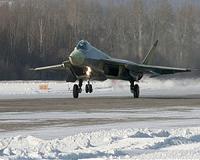 |
Paris (AFP) Aug 16, 2010 Lightning, which is believed to have caused the crash-landing of a Boeing 737-300 plane in Colombia on Monday, is a constant threat to passenger jets. At least one person was killed and 120 injured when the Colombian plane belonging to the company Aires broke into pieces on landing at an airport on the Colombian island of San Andres, after being struck by lightning. Passenger jets are hit by lightning every 1,000 hours -- on average twice a year, according to the French national office for aerospace study and research (ONERA). But the lightning rarely results in crashes. "In my career as a pilot I often experienced lightning as did all of my colleagues. It's something which is often impressive, it makes a lot of noise in the aircraft and usually electrical power fails, but it's just as if it happens at home: the fuses jump, you put them back and everything works," said Francois Grangier, an expert on aircraft accidents. Usually, the electrical impact spreads across the surface of the aircraft "along the external skin, in aluminium alloy which is a very good conductor of electricity, and the fuselage and wings act as a Faraday cage," he said. Under the Faraday phenomenon any external metallic frame prevents lightning from traversing the structure. "Lightning could cause a mechanical problem, it could pierce the aircraft, but usually it can continue to fly," Vincent Fave, an airline accident investigator told AFP. However, aluminium is increasingly giving way to composite materials based on carbon fibre and resin. Manufacturers are making more use of these materials because they offer weight, and therefore fuel, savings. For example, Boeing's new generation 787 Dreamliner depends on extensive use of such materials. But composite materials are less effective in deflecting lightning and manufacturers have turned to another way of providing a shield. They use the 'metalisation' of the aircraft: a kind of mesh is added, a superficial layer which acts as a Faraday cage and in this way the aircraft is protected. In the past 15 years, at least three other air crashes are believed to have been caused by lightning. On September 17, 1996, a two-seater Rutan-Long Ez plane crashed in Herault in southern France due to lightning, according to an official probe. On June 22, 2000, a bi-turboprop Yun 7 belonging to the Chinese carrier Wuhan Airlines was hit by lightning, according to the Chinese authorities, as it approached Wuhan airport. Forty-two people on the plane and seven on the ground perished when the plane crashed into a boat. Lightning is also suspected in the crash of a Kenyan Airways Boeing 737-800 on its way from Abidjan in Ivory Coast to Douala, Cameroon on May 5, 2007. It went down in a violent storm and all 114 people on the plane were killed.
Share This Article With Planet Earth
Related Links Aerospace News at SpaceMart.com
 Russian analysts assail aerial projects
Russian analysts assail aerial projectsMoscow (UPI) Aug 13, 2010 Russia's defense industry, previously largely off-limits to journalistic scrutiny, has increasingly entered the public debate. Among the topics under debate is the percentage of foreign components and financing in Russia's previously autonomous weapons and civilian aircraft systems, Vedomosti reported on Thursday. Two of the top issues under discussion are the Sukhoi PAK FA T-50 ... read more |
|
| The content herein, unless otherwise known to be public domain, are Copyright 1995-2010 - SpaceDaily. AFP and UPI Wire Stories are copyright Agence France-Presse and United Press International. ESA Portal Reports are copyright European Space Agency. All NASA sourced material is public domain. Additional copyrights may apply in whole or part to other bona fide parties. Advertising does not imply endorsement,agreement or approval of any opinions, statements or information provided by SpaceDaily on any Web page published or hosted by SpaceDaily. Privacy Statement |